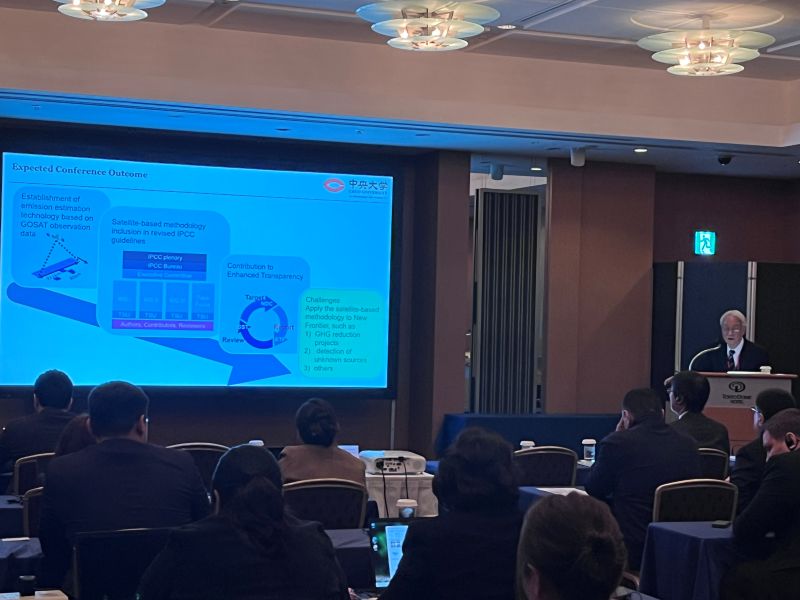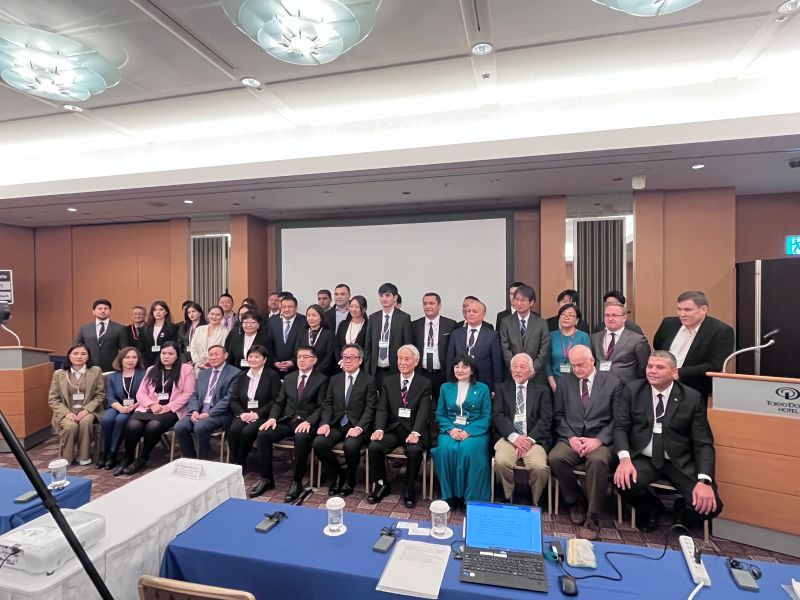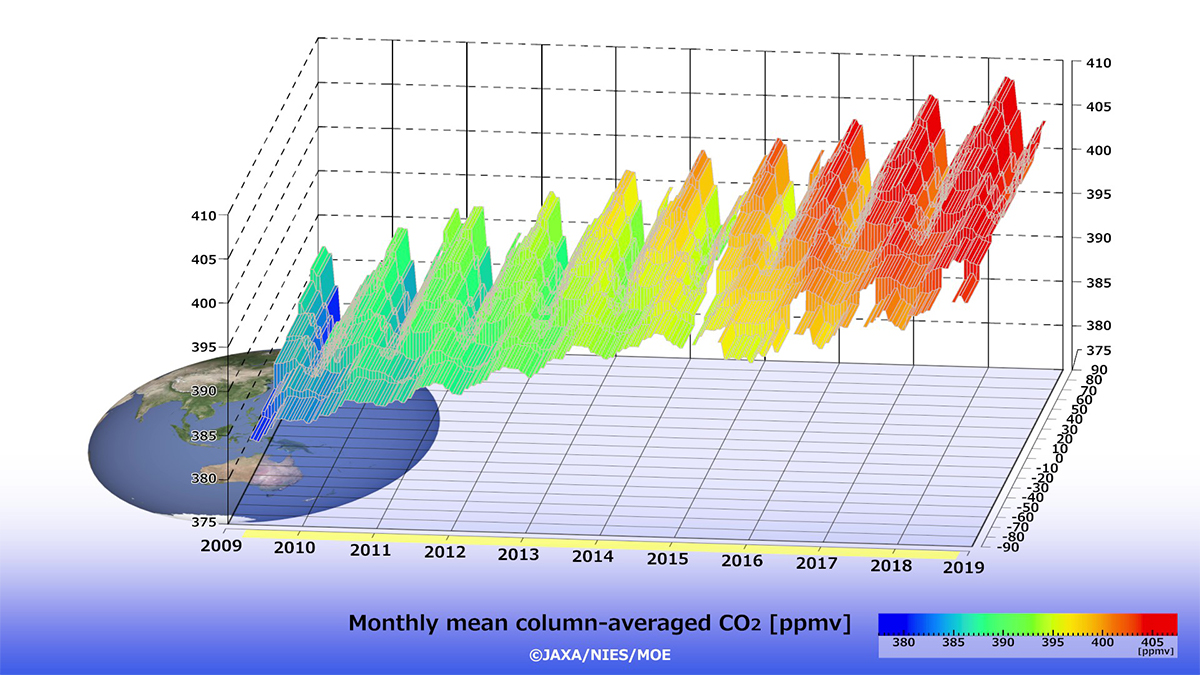2025.03.06
Conference on Transparency Through GOSAT For BTRs (Central Asia)
The GOSAT, Japan’s Greenhouse gases Observing SATellite, plays an important role in the advancement of GHG emission estimation technology. By accurately monitoring the concentration of GHG globally and identifying their sources, it also contributes to enhancing the transparency of national emission reporting. The Ministry of the Environment, Japan is promoting its efforts in supporting climate change measures by leveraging GOSAT information in countries around the world.
On February 3-4, 2025, an international conference titled “Transparency Through Greenhouse gases Observing SATellite (GOSAT) For Biennial Transparency Reports (BTR)” was convened in Tokyo to discuss cooperation aimed at strengthening the capacity of Central Asian countries in satellite technology for assessing their GHG emissions and sharing data to enhance transparency. The OECC supported the hosting of the conference as the secretariat, following its support for the GOSAT side event at COP29.
Approximately 50 participants including government officials and researchers involved in GHG inventories from Japan, Central Asian countries, Azerbaijan, and Mongolia, as well as experts from international organizations such as the IPCC-TFI (Intergovernmental Panel on Climate Change Task Force Inventory) gathered to share information and discuss ways to improve GHG emission data acquisition at the national level through the use of GOSAT, and how to apply this information in the preparation of BTRs. Active discussions at a practical level addressed the current status and challenges of GHG inventories in each participating nation, and the possibility of improving the accuracy of estimations by measuring emissions using GOSAT.
Background of the conference: Enhancing transparency based on the IPCC Guidelines
As part of efforts to improve transparency within the framework of the Paris Agreement, the focus is now on how each country reports on GHG emissions and how to ensure that transparency. Japan has proposed international standardization of emission estimation methods using GOSAT data and is trying to establish standards to increase the reliability of each country’s GHG reports. Discussions during COP29 highlighted the importance of estimating emissions based on a common methodology and prompted countries to consider using satellite data. (See the activity report on “Support for the GOSAT Side Event at COP29” here.)
Held three months after COP29, this meeting saw participating countries, including Japan, discuss cooperative research aimed at establishing emission estimation technology using GOSAT data, and future efforts to integrate the findings into the IPCC Guidelines.

Presentation on hybrid estimation system using satellite observation data (Chuo University)
The first day’s session discussed current GHG inventories, followed by a Q&A session. The afternoon session featured a panel discussion on GHG inventory methodologies, including a hybrid system to estimate CO2 emissions that takes advantage of the strengths of traditional bottom-up methods using statistical data and top-down methods using satellite observation data. These discussions underscored the challenges of maintaining data precision and accuracy, including a lack of human resources with data management and impact assessment skills in countries, the lack of a centralized integrated database, inconsistencies in land categories with IPCC guidelines, and the lack of national coefficients.
In the morning session on the second day, a case study from Mongolia was introduced to demonstrate how GOSAT-based estimation of greenhouse gas emissions and removals is being applied. In the afternoon session, a panel discussion was held on proposals for incorporating satellite data-based estimation methods into the IPCC Guidelines.

Case study: GOSAT’s role in enhanced estimates precision
Mongolia employs GOSAT data to estimate greenhouse gas emissions in rangelands, which helps improve grazing management, and publishes the measurement results in the BUR to make the data available internationally. Many Central Asian countries currently estimate emissions by aggregating data from the bottom up, but by using GOSAT to improve the accuracy of national emissions estimates, as Mongolia does, it may be possible to monitor the progress of GHG reduction in their own countries in real time and take effective measures. In particular, in vast countries such as Mongolia and Central Asia, which have relatively few clouds over the year, the introduction of a GHG monitoring system using satellite technology is expected to be effective. Many requests were raised by Kazakhstan and other Central Asian countries for future horizontal development of BTR preparation using GOSAT technology and environmental cooperation related to such deployment.

(Figure) Global CO2 concentrations observed from space by GOSAT from 2009 to 2020.
Image source: JAXA Satellite Navigator.
Related Links
Support for the GOSAT side event at COP29 (OECC Activity Report)
The site also features URL to GOSAT related publications by Chuo University researchers.
https://www.oecc.or.jp/en/report/250217/
Earth observation by the Greenhouse Gases Observing Satellite (GOSAT) series (MOEJ)
Contains information on the results of the GOSAT series, as well as the GOSAT-GW, which is currently under development.
https://www.env.go.jp/earth/ondanka/gosat.html
(in Japanese)


